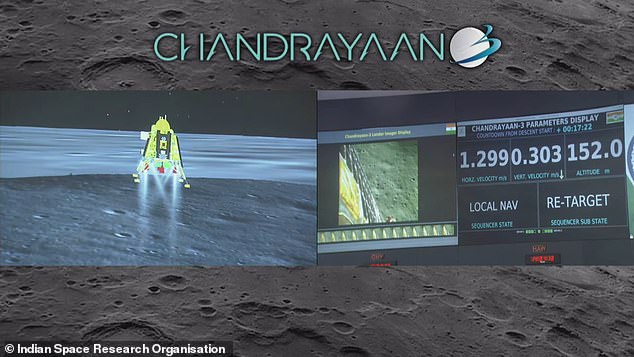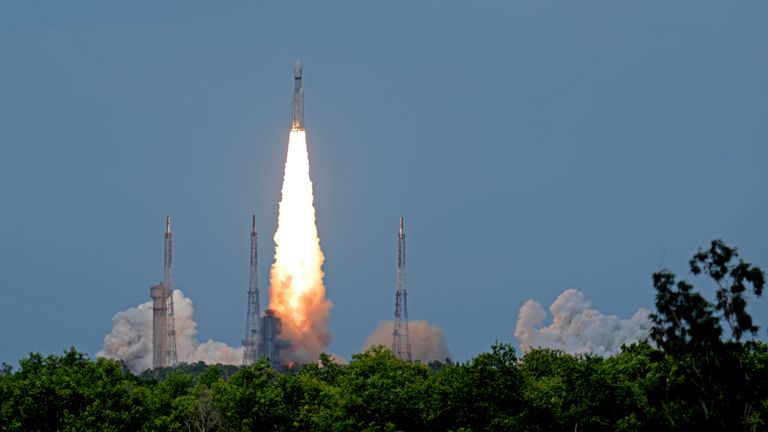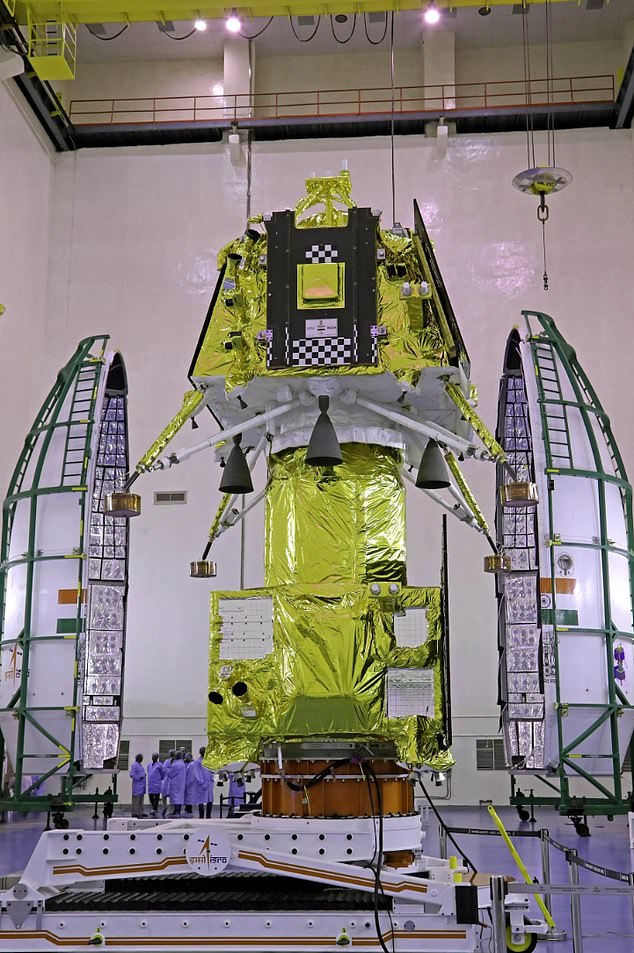Science
India Beats Russia, US To Become First Country To Land On The Moon’s Lunar Pole
India has achieved a remarkable feat by becoming the fourth country to successfully land on the moon, as its Chandrayaan-3 spacecraft made a triumphant touchdown on the lunar surface.

The craft, named after the Hindi and Sanskrit words for ‘moon vehicle,’ accomplished this milestone by landing on the challenging South Pole region, surpassing the achievements of the United States, China, and Russia.
The significance of this achievement lies not only in India’s successful lunar landing but also in its strategic choice of location. The South Pole of the moon, an area yet unexplored by other nations, holds immense scientific potential. Experts believe that this uncharted territory may contain vital reserves of frozen water and valuable elements.

At precisely 8:34 am ET, a lander carrying a rover touched down on the lunar surface, triggering a burst of cheers and applause among the dedicated space scientists gathered in Bengaluru, a southern Indian city renowned for its contributions to space exploration.
This success underlines the emergence of the Indian Space Research Organization (ISRO) as a prominent space power. The Indian government’s focus on driving investment in private space launches and satellite-based businesses further solidifies India’s foothold in space exploration.

The Chandrayaan-3 mission is anticipated to remain operational for two weeks, during which it will conduct a series of vital experiments. One such experiment involves using a spectrometer to analyze the mineral composition of the lunar surface, aiming to determine the presence of water ice.
“This accomplishment signifies a momentous advancement for Indian Science, Engineering, Technology, and Industry, symbolizing our nation’s remarkable progress in the realm of space exploration,” commented a representative.
India’s successful lunar landing follows a previous attempt four years ago with the Chandrayaan 2 lander. Unfortunately, that endeavor ended in a crash due to a software glitch, resulting in the destruction of both the lander and the rover.
Notably, India’s triumphant lunar landing came shortly after Russia’s Luna-25 mission faltered in its attempt to touch down on the moon’s South Pole. The Luna-25 mission encountered difficulties, spiraling into an uncontrolled orbit before ultimately crashing.
The Chandrayaan-3 spacecraft executed its descent with precision at 8:30 am ET, carefully maneuvering its thrusters for a soft landing. The craft deftly employed two engines for the landing process, demonstrating India’s expertise in space technology and engineering.
India’s achievement not only underscores its growing prominence in the global space arena but also speaks to the nation’s dedication to pushing the boundaries of scientific exploration. As India continues its journey into the cosmos, this successful lunar landing marks a pivotal moment in the nation’s pursuit of knowledge beyond Earth’s boundaries.